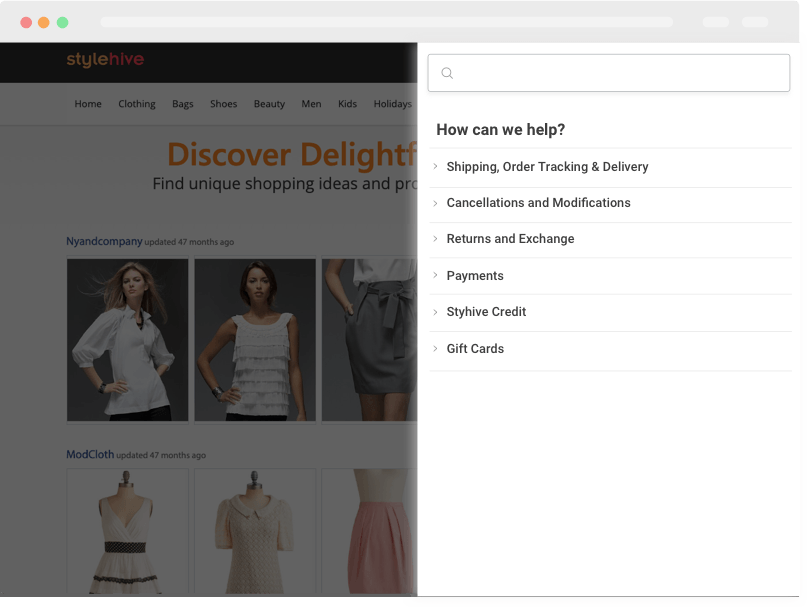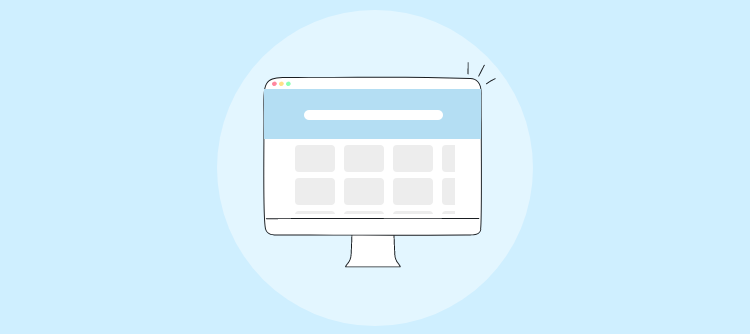
Customer service has got a massive makeover in recent years. Calls and emails are a thing of an era gone by, as customer service today is all about customers helping themselves, and becoming self-reliant.
Thanks to the influx of technological developments, customers have become so accustomed to getting everything in an instant, that the mere thought of calling a representative, and waiting for a response, or emailing the support staff, and getting a reply after days, seems alien to them.
So, the only way to win the hearts of customers in this day and age is to provide them with instant gratification. Creating a self-service help center is one of the easiest, fastest, and effective ways to achieve this.
Before we come to the creation part, let’s first take a look at what is a self-service help center.
Self-Service Help Center Defined
In simple terms, it’s an all-in-one knowledge platform that customers can use to find answers to their questions, regardless of where they are and which device they are using. Its chief objective is to empower customers with self-help, enabling them to address any concerns they have around your product or service, on their own, without seeking external help.
Today’s uber-connected, technologically-forward, and always on-the-go customers have high expectations from brands in terms of convenience and resolution time. They like being their own boss, and that’s the reason there is a rising inclination towards self-service.
That being said, a whopping 90% of people across the globe, surveyed by Microsoft, stated that they expect brands to provide an online platform for self-service.
As customers prefer the DIY approach more than anything else, it’s best for brands to embrace this change and work towards creating an excellent self-service customer support system that –
- Empowers customers to be their own boss
- Reduces the incoming support tickets
- Provides reps with a centralized platform to search for information every time they are interacting with a client
- Increases the productivity of your support staff
All of this can be achieved if you have a full-fledged online help center in place. Let’s see how you can build a help center for your customers.
How to Create a Self-Service Help Center in 10 Easy Steps
Step 1: Set Clear Goals
Before you start working on your help center, ask yourself a few basic questions such as:
- What’s the objective behind creating the help center?
- Who is my target audience – customers or support staff?
- What’s the ultimate goal – to enable customers to resolve queries or to build relationships with customers?
- Do I want to use the self-service portal as a lead generating platform, or simply to help customers find answers to their questions?
Think, and come up with such questions as they will clear the clutter and bring in some clarity, helping you determine the real objective of creating a self-help knowledge base.
Step 2: Define the Roles and Responsibilities
When you know why you are creating this help center, the next step should be to decide who will be responsible for what.
Depending on the skill sets of different employees and teams, you can allot them roles such as contributor, editor, administrator, and viewer. Roles, when clearly defined, provide a definite framework to users, within which they can work and give their best. You can also have multiple authors for a single help center. This works great if you want employees from different divisions to share their expertise around a subject in your self-help knowledge base.
When employees know what they are expected to do, there will be little confusion, more productivity, and the self-service help center will be up and running in no time.
Step 3: Start Authoring
Once the role of each individual is determined, contributors can start writing content, or if they already have useful information in Word docs, PDF files, or PPTs, they can import them into the help center. The imported content then gets converted into meaningful knowledge base articles.
This expedites the entire process of building a self-service help center.
Step 4: Multimedia Can Be Magical
The role of multimedia in enhancing the value of content is often underestimated, when in reality, it can work wonders to your help center, provided you use it wisely.
Since different people have varying preferences – some might like understanding a process by watching a video, while others may prefer going through texts and screenshots for the same. So, it can’t be generalized as to what works where. The only way to leverage multimedia optimally is by balancing it out.
Have the right blend of text, images, and videos in your help center, to cater to audiences of all kinds. This is a sure-shot way to ensure that there is everything your customers need to get information and address any concerns they have with your product.
Step 5: Keep It Mobile-Friendly
A majority of customers today use mobile phones to browse sites, resolve a query, or reach out to a brand. At a time when mobile has penetrated across geographies, creating a mobile-friendly help center is more of a necessity and less of choice.
If you go by your choice, assuming that people still prefer desktops over mobile phones, and do not build a help center that works well on smartphones, it can be consequential for your business. Not only will you lose out on serving a majority of your customers, but you will also be left behind in the ultra-competitive business landscape.
So, ensure that your self-service help center is created in a way that works seamlessly across devices, including mobile phones, tablets, as well as laptops.
Step 6: Leverage Employee Knowledge
A self-service help center cannot be created in silos. Since it is specifically built for customers, it needs to have accurate and relevant information, covering the various facets of your products or services.
For this, it’s crucial for your employees from different divisions to come together and contribute knowledge specific to their departments. For instance, marketing folks can include relevant content based on their observations of customer behavior, their search patterns, the interactions they have with other customers, and more.
Similarly, the sales team can share information related to customer feedback, create articles on topics that form the major queries of customers, revise content in articles where errors were spotted by customers, etc. Doing these little things can bring a larger impact by showing to customers that you care.
Step 7: Customization Is Key
No one wants to read a lackluster document that is full of text, meaningful but not attractive enough to keep readers hooked.
Customization is something that can help you give life to your help center. All you have to do is use themes, designs, fonts, and colors that give a rich look to your help center. Keep in mind the fact that your help center is mainly for your customers, so it’s best not to go overboard with anything. Instead, try to be minimalistic and professional when it comes to customizing your help center.
Another important thing to note here is that your help center should speak volumes about your brand and for that to happen, you need to first add your brand name and logo to the content.
The next best thing to do is to make your help center suitable for a global audience. Create content in multiple languages so that all your customers, regardless of which language they speak, and which part of the world they belong to, can read and understand everything written in your help center.
Step 8: User Experience Matters
Simply creating a help center isn’t enough. The kind of experience your customers get while browsing through your self-service help center determines whether your efforts were successful or they went in vain.
User experience encompasses everything right from how the search mechanism is functioning to whether customers are getting the right answers.
To improve user experience, ensure that:
- Your search system is powerful
- Content has the keywords that customers frequently search for
- Your help center works seamlessly across devices and browsers
- You ask for customer feedback at the end of every article
- Your help center is visually appealing
- Navigation is a breeze
- Important articles are cross-linked
- The help center has a defined structure with a table of contents placed right at the beginning
Step 9: Keep Your SEO-Game on Point
What’s the point of your help center if customers or your prospects can’t find it on search engines?
Today, if something doesn’t exist on Google, people start questioning its identity. The reason behind this is simple and quite obvious – Google is one platform where people get anything they want in a snap, whether it be your firm’s website or your online help center.
To increase the likelihood of your help center to be crawled by search engines, you need to optimize it and play the SEO game smartly. Besides putting in the right keywords, you also need to ensure that your content is meaningful and relevant for your customers. If it lacks quality and relevance, there is no chance that Google will feature your help center in the first few results, even if you have used the right keywords.
To know more about how to be strong at SEO, read this blog on ‘The Ultimate Knowledge Base SEO Guide for 2020.’
Step 10: Add an In-App Help Widget to Your Help Center
So now you have great content in your help center, SEO is done right, customization is on point, and nearly everything is perfect. Question is how you can make it even better? Adding an interactive help widget to your help center is the answer.

A help widget appears on your help center pages displaying most popular articles and the option to chat with your representatives if customers’ queries aren’t resolved. The major benefit of a widget is that it empowers your customers to find information instantly without browsing through the entire help center, and going through each and every article.
You can group your popular articles, place them in a single widget, and improve your self-service customer support.
Way Forward
Setting up a help center is extremely easy, provided you have the right partner, giving you the best advice, as you go on building, maintaining, and improving your content. Before you start creating content, don’t forget to chalk out the ultimate goals that you wish to achieve with your help center, and remember that every decision you take should be centered around customers.
Once your help center is ready to rock, keep evaluating its performance, and improvising it for maximum results.
Do you want a free Knowledge Base?
We have the #1 Online Knowledge Base Software for instant self-help







